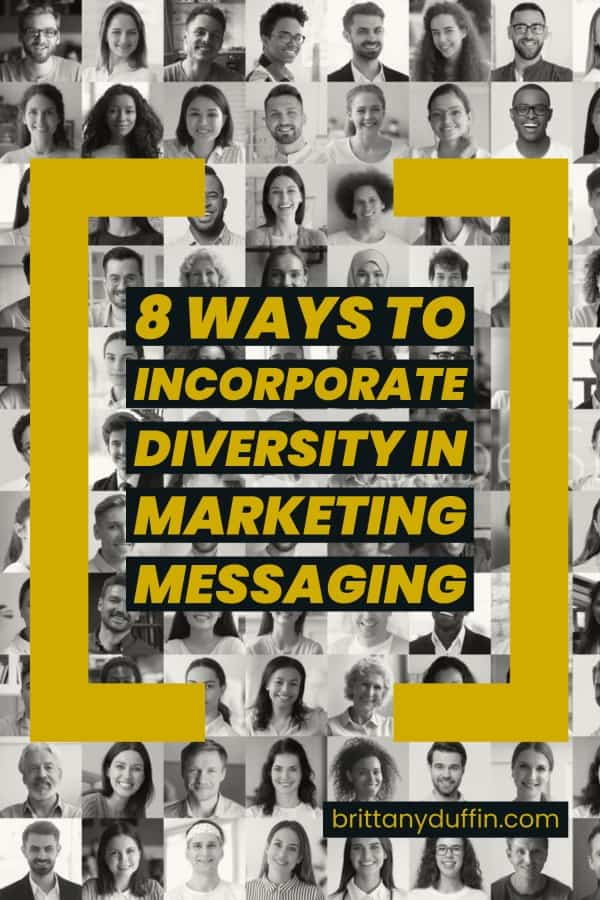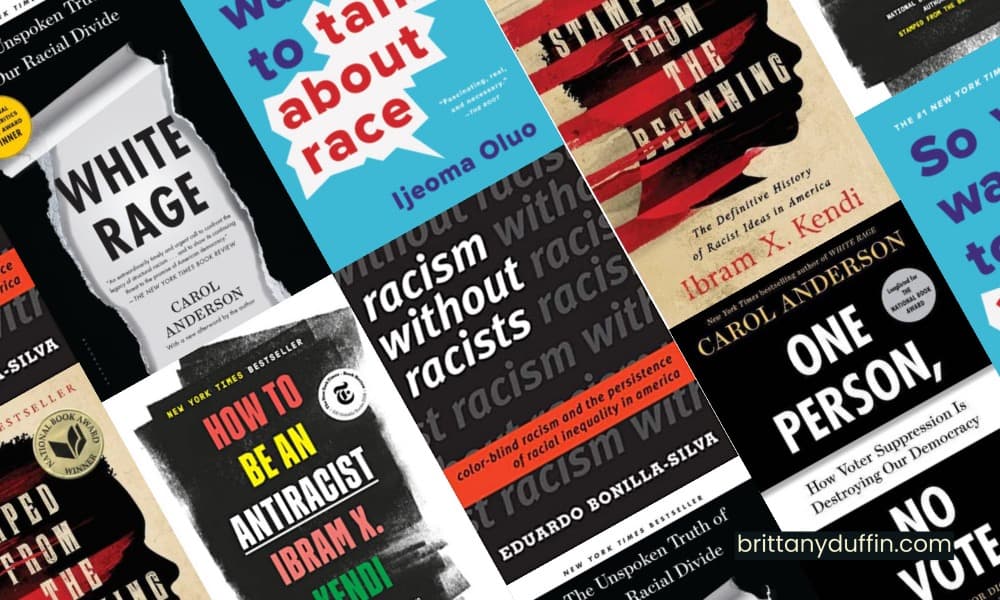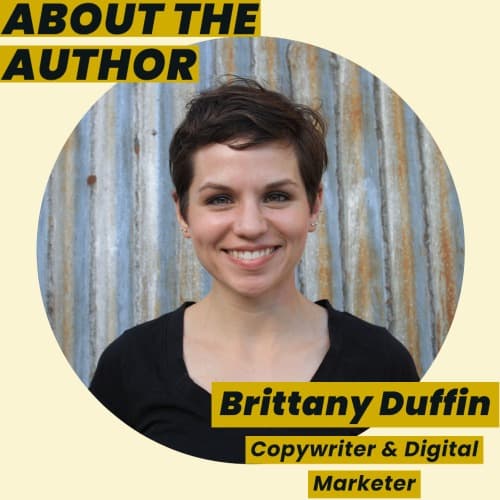This post contains affiliate links. Read the Affiliate Disclaimer to learn more.
Incorporating more diversity in marketing can be a excellent way to improve brand loyalty and forge a better connection with your customers, and even build a stronger and more creative marketing team.
But when done inauthentically, it can be a disaster, marked by backlash and boycotts of your brand.
The social unrest surrounding the Black Lives Matter movement and the recent deaths of Ahmaud Arbery, Breonna Taylor and George Floyd, all coinciding with Pride month, have left many people wondering, “What can I do to support marginalized groups?”
Some have taken to social media to voice solidarity and create awareness.
Others have donated to causes that push for legislation combating systemic racism and discriminatory practices.
And some people have started to educate themselves and check their own biases, while others have turned their attention to the ballot boxes.
And while these actions are all excellent ways for any individual to support marginalized groups, have you considered that you can make an impact in your work as a marketer as well?

Should businesses take a stand on social issues?
We are taught that politics don’t belong in the workplace, but I am convinced that businesses both big and small — and the employees who act on behalf of those businesses, including marketers — have a social responsibility to help create the world they want to live in.
Businesses arguably affect the livelihoods of many more people — and often entire communities — than any individual person (through hiring practices, compensation and benefits policies, career succession plans, access to health insurance, product design and messaging, workplace culture, etc.), and their actions and marketing statements are on public display.
Additionally, it’s just good business.
Gen Z shows us that as they ramp up buying power, they’re more likely than previous generations to make purchase decisions based on values and social issues, and the #MeToo and #BlackLivesMatter movements are at the top of their lists.
This is important work for our communities, our businesses and our own integrity.
How to incorporate diversity and inclusion in marketing
It’s easy for marketers and copywriters on predominately white and cis-gender teams to become discouraged, thinking that, besides slapping a rainbow onto their company logo, they cannot influence an entire company’s response to diversity and inclusion.
Which is sorta kinda true.
They do not always have a say in fair hiring practices, equal pay for equal work, customer service policies, and whether or not the company implements charitable donations.
You can’t communicate a commitment to diversity that isn’t there.
But I still believe that simple actions can go a long way, and it is everyone’s responsibility to do this work, both in their personal and professional lives.
So here is a good starting point of ways that marketers, copywriters and businesses can support diversity and inclusion.
There are so many ways to do this, but I am going to focus my recommendations on incorporating diversity in marketing, specifically through content and external business communications, like on the company website and as part of marketing campaigns.
I’ve also crafted this list with the white, cis-gender copywriter in mind, but believe that some of these ideas could apply to all writers regardless of race or sexual orientation. Please know that this is by no means an exhaustive list, and I welcome additional ideas in the comments!

1. Educate yourself on racial issues and their origins
Yes, of course this is the first step!
You cannot create change in a vacuum, without educating yourself on what diversity and inclusion means and why it matters.
Some of my favorite books on race are:
- So You Want to Talk About Race by Ijeoma Oluo
- Stamped from the Beginning, and How To Be An Anti-racist, both by Ibram X. Kendi
- White Rage, and One Person No Vote, both by Dr. Carol Anderson
- Racism Without Racists by Eduardo Bonilla-Silva
This is the first step, but it cannot be the last.
Educating yourself on systemic racism and other forms of discrimination is not the same as activism.
2. Evaluate your professional network
Have you ever heard of hive mind or group think?
Teams made up of people with similar opinions, ideas, thought processes and backgrounds tend to validate themselves in a way that can prevent innovation and creative thinking.
You don’t want this for yourself or your business.
Consider the diversity of your team, including employees, mentors and mentees, freelancers and vendors.
Do all of these people look like you? Is there opportunity to include a more diverse perspective in your marketing campaigns?
I know that you probably wanted a quick and easy checklist from this article, but the truth is that diversity in marketing isn’t just a bunch of stock photos of Black, Indigenous, and people of color (BIPOC).
Inclusive marketing starts with you, the marketer, and the rest of the marketing team creating external communications.
3. Pay your marketing and copywriting interns
Many freelancers, solopreneurs, and marketing teams rely on interns to handle tasks like administrative work, social media, and writing copy.
And unfortunately, several of those internship programs are unpaid.
On-the-job-experience and professional networking is valuable, but it is not payment. When you do not pay interns for their time and effort, you close the door to bright and capable students who do not have financial support from their families and need a real paycheck in exchange for their hard work.
You perpetuate an existing problem where a select few have access to education, resources and resume-building work experience, not solely because of their qualifications but also because of their wealth status.
4. Consider how you portray marginalized groups in your writing
Are all of your Black characters unemployed hoodlums with drug addictions and absent fathers?
Are all of your protagonists cigender white people who go to church every Sunday, have college degrees, and live in nice neighborhoods?
Whether you write headlines, news stories, advertisements, blog posts, fiction novels, or screenplays, the way we portray people is important.
It’s crucial that marginalized groups can see themselves portrayed in media, advertisements and the news in a way that reflects reality and does not reduce them to a set of stereotypes.
Also consider whether identifying someone by their race is even important to your writing. Use the AP Styleguide on race-related coverage as a reference.
5. Include a more diverse set of voices into customer quotes and testimonials
Including case studies, testimonials and customer quotes in your copy is an excellent way to create “social proof” and gain objective validation for your product or service.
It’s also a great way to incorporate diversity in marketing.
There is an opportunity to reach out to people who do not look like you and get their thoughts, feedback and perspectives.
When connecting prospective clients with references from current clients, you must consider whose voices you feature.
Don’t try to cherry-pick the “ideal” person to provide a review for your business.
When you are looking for customer feedback and client testimonials, do not shy away from the names that sound foreign or are difficult to pronounce.
Who knows — you might even learn that you are underserving a customer segment.
6. Give credit where credit is due
From Tik Tok dances to launching astronauts into orbit, we have a history of erasing and down-playing the contributions and accomplishments of BIPOC.
As a writer, you can change that. If you write about culture, art or history, double- and triple-check your sources to make sure you’re giving proper credit.
Link to the original author’s website or post.
7. Create space for BIPOC and LQBTQ+ people and culture
As a copywriter, I often imagine my reader/customer in my mind, and write to them as if I were speaking to them.
It’s an exercise that helps me connect with my audience, formulate my thoughts, and share them in a conversational way that is easy to digest.
For writers who utilize this strategy, try imagining a BIPOC or LGBTQ+ person as your reader.
Does it feel different?
Do they have different needs and perspectives that your writing hasn’t been addressing?
This might even prompt a deeper conversation about the assumptions we make about our customer personas.
Another way to create space specifically for Black culture in your writing is to write it with a capital B. Here is an interesting article about the Seattle Times’ decision to do so.
In the same vein, we as writers can be conscious of our portrayal of Ebonics, and of who decides what “proper English” is.
8. Consider the ways in which racism and discrimination appear in our language
As a writer, you have the opportunity and obligation to protect the inviolability of the English language, but you can also choose what’s worth protecting.
If you are writing in a professional setting, you probably (hopefully!) don’t use the word “gay” as a synonym for “lame,” or “pussy” as a synonym for “weak,” but there are other similar discriminatory and controversial phrases we can weed out of our common use.
For example, if you work in the real estate industry, you might consider renaming the “master bedroom” as the “primary bedroom” because of its association with slave masters.
It’s important to recognize that simply renaming something or swapping out words and phrases does not fix systemic racism, so please don’t confuse this with real activism.
But, as writers we can be conscious of the culture and ideas we preserve.
Consider replacing words and phrases like the ones on this list, which have a complicated origin rooted in racism.
Diversity in marketing: Conclusion
I hope these ideas are helpful to you in taking a step toward a more inclusive copy and marketing team, and taking a more audience-centric approach – especially when that audience does not look like you.
Inclusive marketing is so much more than just posting a black screen as your profile image, linking to your company’s “commitment to diversity,” or sprinkling in images of Black women.
It’s work.
If you or your team have implemented any of these suggestions with success, or have additional ideas, let me know in the comments!

My name is Brittany, and I have 10 years of experience in copywriting and digital and direct-response marketing.
I’m here to help you sharpen your writing skills and enhance your marketing messaging. When I’m not brainstorming the next best subject line, you can find me watching scary movies, skating, and taking pictures of my food.